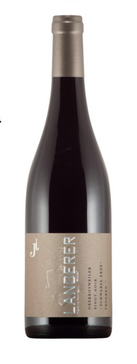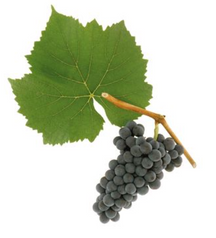

SPICY & MINERAL
The grapes are from the top fields Eichberg and Henkenberg with volcanic soil, close to the vineyard. 100% from vines originating from Burgundy. Pomegranate red, fruity and very juicy with the feeling of a rather tight acidity. Well seasoned and very mineral with a light roasted touch from the oak barrels.
An upright and characterful wine that can develop further. Organic and vegan.
KRYDRET & MINERALSK
Druerne er fra top-markerne Eichberg og Henkenberg med vulkansk jordbund, tæt på vingården. 100% fra vinstokke der stammer fra Bourgogne. Granatrød, frugtrig og meget saftig med følelse af en ret stram syre. Godt krydret og meget mineralsk med let ristet præg fra egefadene.
En rank og karakterfuld vin, der kan udvikle sig videre. Økologisk og vegansk.
FACTS
Country: Germany
Region: Baden
Winery: Weingut Landerer
Year: 2020
Type: Red
Grapes: Pinot Noir
Alcohol: 13%
Aging: Oak barrels
Closure: Cork
Winemaking: Traditional
ABOUT THE WINERY
WEINGUT LANDERER
Weingut Landerer is located in Kaiserstuhl: a very characteristic, volcanic area in the central part of Germany's southwestern and warmest wine region: Baden. Johannes Landerer, who had worked on a top vineyard in South Tyrol, had to take over the operation of the family property in a hurry when his father died suddenly in 2016.
There are 22 ha. predominantly high-lying vineyards with weathered volcanic soil, intersected by long limestone veins. Many different both red and white grape varieties have been planted. His main focus is Pinot Noir / Spätburgunder, which makes up approx. half of production. The highest-ranking fields are the Eichberg, Kirschberg and Henkelberg, all close to the property in Niederrotweil, as well as the Gestühl field a little north of Leiselheim.
Weingut Landerer ligger i Kaiserstuhl: et meget karakteristisk, vulkansk område i den centrale del af Tysklands sydvestligste- og luneste vinområde: Baden. Johannes Landerer, der havde arbejdet på en topvingård i Sydtyrol, måtte i hast overtage driften af familieejendommen, da hans far pludseligt døde i 2016.
Der er 22 ha. overvejende højtliggende vinmarker med forvitret vulkansk jordbund, gennemskåret af lange kalk-årer. Der er plantet mange forskellige både røde- og hvide druesorter. Hans hovedfokus er Pinot Noir/Spätburgunder, som udgør ca. halvdelen af produktionen. De højest rangerende marker er Eichberg, Kirschberg og Henkelberg, der alle ligger tæt på ejendommen i Niederrotweil, samt marken Gestühl et stykke mod nord ved Leiselheim.


Pinot Noir
The fashionable red burgundy grape is capable of producing divinely scented, gorgeously fruity expressions of place but often unwilling or unable to do so. Pinot Noir is sensitive to the size of crop it is expected to produce, and many vapid examples exemplify an over-demanding yield. It ripens relatively early so is not suitable for very warm regions where there would be no time to develop interesting flavours before acid levels plummet. On the other hand, many of the cooler regions in which it thrives suffer autumn rains which can rot Pinot's thin-skinned berries, resulting in pale, tainted wines. The Pinot Noir grower's lot is not an easy one.
This ancient eastern French vine is, with Gouais Blanc, parent of a host of other varieties including Chardonnay, Gamay and the Muscadet grape Melon de Bourgogne. Because it is so old, there are many well-established mutations such as Pinot Gris, Pinot Blanc and Pinot Meunier and there is enormous variation in wine quality between different clones. Planting the wrong clone in the wrong place is one of many reasons for the wide variation in quality between different red burgundies and different varietal Pinot Noirs from elsewhere.
The positive side of all this is that Pinot Noir is a very transparent grape. It really can communicate the difference in terroir, or grape-growing environment, between adjacent plots of vineyard.
Copyright © All Rights Reserved